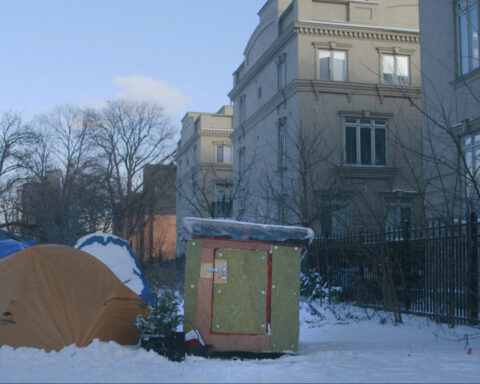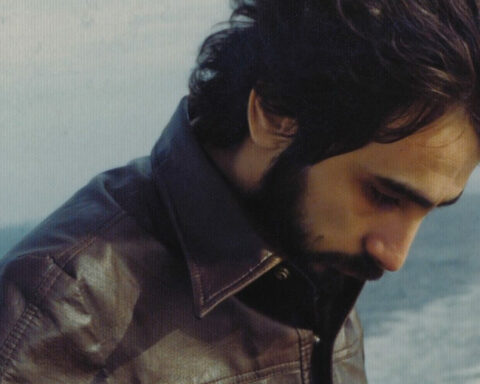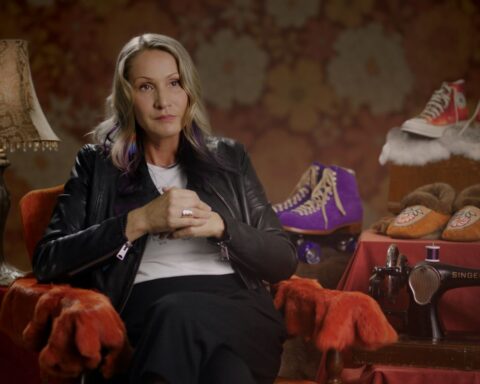The Vancouver International Film Festival (VIFF) doesn’t get the sexy celebrities or Oscar buzz of the Toronto International Film Festival. But it does have its own trump card: it’s the largest regular showcase of documentaries in any general festival in the world. Fully one-third of the 200-plus features it presents every year are non-fiction.
Before the rise of doc-specific festivals like Hot Docs in Toronto and DOXA in Vancouver—and ahead of Toronto and Montreal’s international festivals—programmers at VIFF sparked to non-fiction films and started cultivating an audience for them. Alan Franey has been with VIFF since 1982 and still serves as its director of programming after stepping down as festival director a couple years ago. In an interview with POV, he says his memory “goes back to the 1980s, when films we cared a lot about wouldn’t draw flies—and that was true of Canadian films too. There were very few Canadian or non-fiction films that met our hopes and expectations in terms of attendance. That started to change with better exposure and understanding on the part of our audience.”
Documentaries became a central component of VIFF in 1992, when Franey’s team decided to showcase them in a section they called “The Gulf War and Other Nonfiction Features” and inaugurated an award for the best of the bunch. VIFF partnered with the National Film Board of Canada to promote this section, introduced a documentary pass for filmgoers and, after several years, stopped name-checking a film in the section’s title and just called it “Nonfiction Features.”
The section eventually reached a critical mass of filmgoers. “I think we hit a fairly stable point about 10 to 12 years ago where a third of the [festival’s] programme was for non-fiction, and a third of the audience attendance was for non-fiction. And that’s when we were up around 100 films, almost all of those feature-length,” Franey says. By then, the “Nonfiction Features” catch-all needed tweaking. Franey’s team decided to break the section into two: one dedicated to issues-based films like political documentaries and biographies, which retained the original title; the other section looked at the arts and started out as “Nonfiction Features: Arts & Letters” in 2007 before taking its current title of simply Arts & Letters.
These two sections now appear back-to-back in VIFF’s programme guide, but non-fiction isn’t ghettoized. A third of these films are sprinkled throughout the festival, in Galas and Special Presentations and in region-specific sections like Canadian Images and the Asia-focused Dragons & Tigers. (Only Cinema of Our Time is restricted to fiction films.)
Franey admits that finding the right place for a documentary has gotten harder over time. “It’s tough for us to decide where a film should go and it’s tough for us to decide sometimes whether a film is more fiction or non-fiction, because of all these hybrid forms which are so interesting,” he says. “It’s tempting to just list them alphabetically so you don’t have to make those hard editorial decisions.” His team also struggles with where to put co-productions. “Like with Canadian Images: do we just include films that have images of Canada, or do we include a film where Canada’s a minority partner but the film’s set in India or China?”
VIFF’s longtime Canadian programmer, Terry McEvoy, thinks a solution might be to call the section Canadian Visions instead. Incidentally, he’s seen a rise in submissions of Canadian documentaries lately that look far outside our borders. “I’ve seen films about Sri Lanka, Estonia, Japan, Africa. It’s really remarkable,” McEvoy says. “If they’re not set somewhere else, they’re immigrant stories and they’re half somewhere else. I think it speaks to the strong multiculturalism of Canada and the fact that people do feel they have stories to tell.” Documentaries are busting out of the seams all over.
In fact, they’ve increased in number and quality to the point where McEvoy claims he could easily program all 40 films in Canadian Images this year with documentaries—and he thinks audiences would lap them up. “In the last several years, many times the most popular Canadian films [at VIFF] have been documentaries. Last year it was Just Eat It: A Food Waste Story, All the Time in the World and A Different Drummer: Celebrating Eccentrics,” McEvoy says.
But VIFF doesn’t always get to present the films its programmers want. Franey says his team has mixed feelings about occasionally losing a non-fiction film to DOXA or another local showcase. “We have to be philosophical and say, that’s OK, at least Vancouver audiences are getting the opportunity to see it and there will be another space for us for a different film,” he says.
As much as filmgoers might be enjoying this non-fiction bonanza, Franey worries it may be contributing to challenging market conditions for the documentary community. “I don’t want to sound the least bit triumphalist here,” he cautions. “While we get good audiences, we almost wish we had more room to show films. We see so many great ones falling between the cracks or dying on the vine. It’s tough times for filmmakers, partly because there are so many films. It’s easier than ever to make one because of technology, but it costs a lot to release a film. So films are seen either on small screens or if they’re on a big screen, then it really is the work of cinematheques and film centres like ours, or festivals like ours and DOXA.”
That brings up the tricky question of who’s benefitting from the non-fiction bonanza at festivals like VIFF. Programmers and audiences, sure, but do the filmmakers get more than glory out of it?
Franey says it’s now a Wild West for mid-sized festivals like VIFF when it comes to compensating filmmakers for the popularity of their documentaries. As the head of a non-profit organization, Franey was obliged for many years to sign an affidavit promising not to pay commercial rental rates for VIFF’s films in order to secure Telefilm’s sponsorship. The deal was meant to promote the festival as a cultural enterprise instead of a commercial one. But with film festivals and institutes turning private all over the world and middlemen entering the fray, the terms of the deal had to change.
“I had to go to Telefilm and say, ‘I can’t sign this part anymore because there are a number of sales agents coming into being who say they need to cover their overheads and they need to charge a fee.’ So we didn’t want to say no to those films and we accept that the world’s changing. We can’t be exploitative,” Franey explains.
Now Franey has the choice of paying either a commercial rental rate, a sales agent’s fees or the filmmaker’s costs to attend VIFF. He’s not sure if the filmmaker is compensated when a rental rate or agent’s fee is paid. And he notes ruefully that many films participating in VIFF will make more money there than they will from their release in Canada—or they might not get released in Canada at all. He wonders how other festivals operate. “Does TIFF pay rental rates?” he asks. “People don’t seem to think so. Cannes would not pay rental rates. A filmmaker participating in a smaller festival that’s just getting started probably wouldn’t expect a rental rate, so where does it start and where does it end?”











